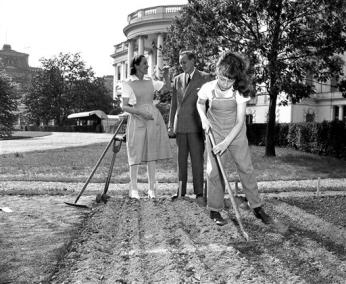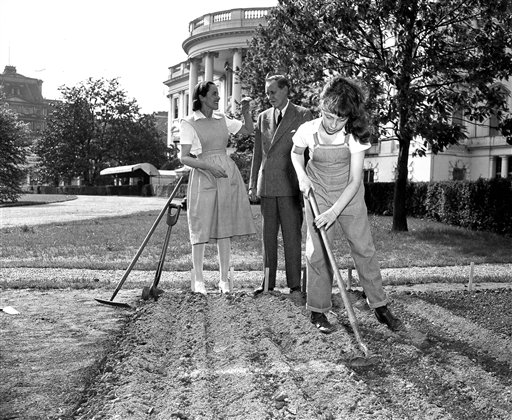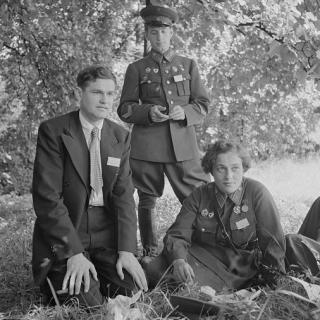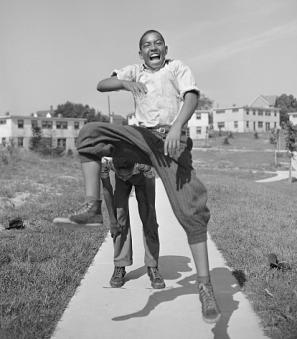Eleanor and Diana's Victory Garden
Throughout the centuries, the presidential mansion has hosted crops and sheep and all manner of landscaping. But by World War II, the White House lawns were considered purely decorative. A First Lady would have had to fight hard to install a garden by the White House. Luckily Eleanor Roosevelt was up to the task.
With wartime Washington straining to support its growing population, sustainable eating was more important than ever and many district dwellers saw it as their patriotic duty to keep from starving to death. Residents grew their own food in backyards, schoolyards, and window boxes. Everyone from lowly clerks to the Vice President... but not the President. FDR was so against the idea of an executive garden that he reportedly told the federal soil scientists “tell [Eleanor] the yard is full of rocks or something. The people own this place, and don’t want it busted up just so she can plant beans.”[1]
Very likely, the soil scientists knew which side their dirt was buttered on and they told Mrs. Roosevelt the truth. The White House sat on what might have been the most fertile land in the city. And right on the property lived the perfect gardener, little 11-year-old Diana Hopkins.
Diana lived in the White House with her father, presidential advisor Harry Hopkins, and was the perfect person for the First Lady’s project. Eleanor’s plan for the garden was thus: “it will be a small thing, children can grow things they are apt to want to grow in a very small space.”[2]
The gardeners set aside a 2x2 plot and little Diana cared faithfully for the beans, carrots, tomatoes, and cabbage with a spade, a hoe, and rake.
Diana’s efforts changed FDR’s tune, as in a presidential address the next year he said:
I hope every American who possibly can will grow a victory garden this year. We found out last year that even the small gardens helped. The total harvest from victory gardens was tremendous. It made the difference between scarcity and abundance.[3]
The American public, the first family included, produced 40% of their own fruits and vegetables in 1944, opening the way for more food to be sent to troops overseas. So Diana Hopkins probably won the war, is what we’re saying. She and Eleanor Roosevelt.







![Sketch of the mythical fuan by Pearson Scott Foresman. [Source: Wikipedia]](/sites/default/files/styles/crop_320x320/public/2023-10/Goatman_Wikipedia_Faun_2_%28PSF%29.png?h=64a074ff&itok=C9Qh-PE1)












